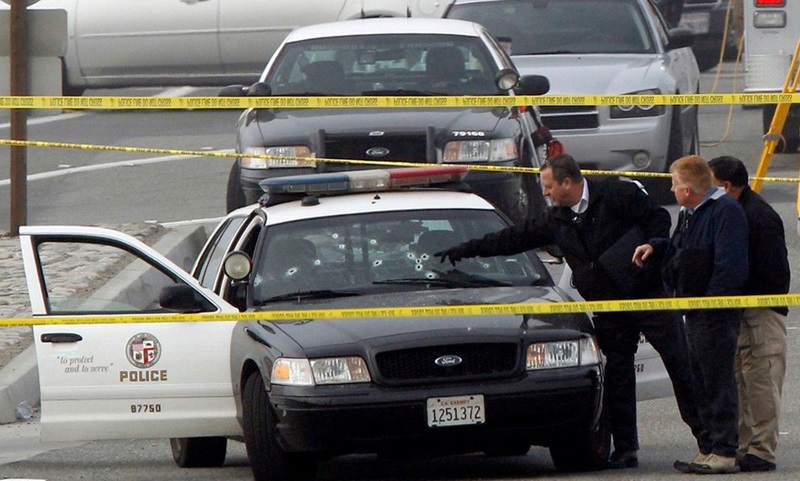
There was an old theory called Spontaneous Generation in which life springs from inanimate substances. For example, when grain is left on the barn floor, rats mysteriously show up. The ancients concluded, therefore, that rats arise from old grain. It is laughable now, but the vestiges of this erroneous theory of causation remain among those who object to protective equipment for law enforcement officers.
When some of my colleagues in Colorado law enforcement were preparing for the 2008 Democrat Convention in Denver, a letter or protest appeared in the Denver Post decrying the fact that shields and gas masks were being requisitioned. He claimed that if police in aggressive riot gear appeared it would create a riot! The same thinking forced police officers all across the country to face civil disturbances in their street uniforms, subject to the rocks, bottles of urine and bleach, bricks, and fireworks so prevalent in recent years. No one blames firefighters in bunker gear with big trucks for starting the fire. Police deserve the same consideration.
One piece of equipment panned by critics is the armored vehicle. Especially those that come painted in green or camouflage, often because they are military surplus, another thorn in the side of police critics.
In a recent NPA article by this writer, the vulnerabilities of standard police vehicles to bullets and other attacks make reliance on the vehicle for protection anything but a guarantee of safety. Images of bullet-ridden doors and windshields, burned-out carcasses, and the crumpled metal of patrol cars rammed by offenders are never far from the latest news. The solution for moving police officers into dangerous territory for response and rescue is the heavily armored vehicle.
The discussion on armored personnel carriers (APCs) has to start with dispelling the notion that any civilian police agency uses “tanks” – the military tracked vehicles with heavy weapons and a turret topped with a high caliber machine gun. I am so confident that these do not exist, I offer the first reader to find one in actual use by American civilian law enforcement a $100 reward from my personal account.
What can come from military surplus, from both American and international stocks, are a variety of vehicles designed to withstand attack and get responders safely to an unsafe scene. When the US forces in Iraq found that their vehicles were subject to roadside bombs, the military, with surprising speed, deployed the Mine Resistant Ambush Protected armored carrier, known as the MRAP. At a cost to the military of up to over one million dollars, civilian police agencies have obtained them for the cost of transportation. Free, of course, is never free, as the cost of maintenance and repair can be heavy on small budgets.
But budgets are at the heart of obtaining MRAPs or any of the other number of armored vehicles from surplus. These are not the most desirable protective response vehicles, because the civilian market for new APCs is available and custom designed for law enforcement needs. The quarter million dollar price tag is prohibitive for most agencies unless grants and multi-agency partnerships are available.
Custom designed APCs can include high clearances for use in flooded areas, battering rams for heavily barricaded structures, floor portals for rescue or deployment, bulletproof skirt panels, tires that won’t go flat, ramps for multi-story buildings, or nozzles for fighting fire. These vehicles can typically hold a SWAT squad and equipment and even deploy robots to enter areas to search for persons or explosives. The list of features can include an interior fire suppression system, air conditioning for extreme heat conditions, optics for night vision, and loudspeakers to communicate with suspects or victims.
If a community wants officers to be able to effectively move into an active shooter situation, rescue a person in a barrage of gunfire, or slosh through flooded streets to answer a call for help, they’ll support the acquisition of an APC.
Make a difference. Support the NPA.